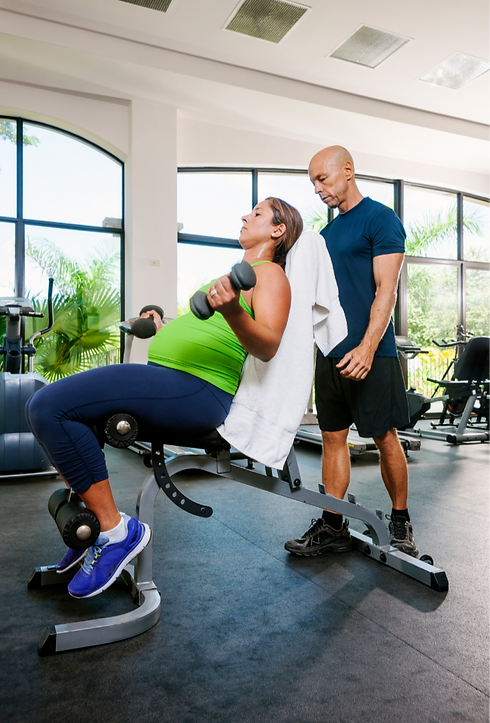Healthcare, Fitness & Sport
Professionals
Check out our advice & guidance, read about our 'whole systems' approach
& discover resources to help you support women

Empower the women you work with!
We believe in a whole systems approach based on clear and consistent evidence-based messages shared by all
professionals so that pregnant and postnatal women feel reassured and empowered to make informed physical activity choices.
To normalise physical activity behaviour throughout motherhood, we recognise that promoting
physical activity is not someone else’s job, it is everybody’s responsibility.
Being Active - A Life Course Approach
As part of a life course approach, and to continue to benefit from engagement in regular physical activity, it is recommended that pregnant and postnatal women aim to accumulate 150 minutes of moderate intensity physical activity throughout the week and engage in strength training activities twice per week.1
As a unique population group certain considerations must be kept in mind to support discussions and modifications throughout pregnancy and beyond.
The Get Active Questionnaire for Pregnancy (GAQ-P)
has been designed to identify the small number of women who need to consult with a healthcare professional before they begin or continue to be physically active, and to help the majority of healthy pregnant women overcome any concerns they might have about getting or staying active.
Download the GAQ-P

Free e-Learning Module
In collaboration with Public Health England and Health Education England, the This Mum Moves project developed a free e-learning module as part of the Physical Activity and Health programme. The Active Pregnancy Foundation has endorsed this module.
The module raises awareness of the current national physical activity guidelines for pregnant and postnatal women and takes around 30 – 60 minutes to work through. At the end, you'll also be rewarded with a certificate of completion.
This module is also suitable for fitness professionals,
and rewards you with 1 CIMSPA endorsed CPD point.

This Mum Moves
This Mum Moves is a co-produced CPD endorsed educational programme for professionals comprising training and resources to equip them with the knowledge, skills, and confidence to discuss physical activity during pregnancy and after childbirth.
Find out more, and book onto a This Mum Moves Ambassador Workshop.

Endorsement by the APF stands as a mark of distinction for professionals delivering physical activity programmes to pregnant and postnatal women. It reflects a steadfast commitment to safe, engaging, and effective workouts and education, supported by the necessary qualifications, valid insurance, and alignment with industry standards.
We provide mentoring for all applicants and we will support you every step of the way, helping you to achieve these standards. We want you to succeed and hope that you will find the endorsement process a positive and rewarding experience.
We've written an Endorsement Guide which details how the scheme works and the steps that need to be taken to receive an endorsement from us.
There is a fee for this service, but we can provide further details.

References:
-
Department of Health and Social Care. (2019). UK Chief Medical Officers’ Physical Activity Guidelines. Retrieved from: https://assets.publishing.service.gov.uk/government/uploads/system/uploads/attachment_data/file/832868/uk-chief-medical-officers-physical-activity-guidelines.pdf
-
De Vivo, M. & Mills H. (2019). “They turn to you first for everything”: Midwives’ perspectives on roles, responsibilities, and barriers in providing physical activity advice and guidance during pregnancy. BMC Pregnancy and Childbirth, 19. doi: 10.1186/s12884-019-2607-x
-
Gilroy, V., De Vivo, M., & Lawson, R. (2019). Educational campaign to support pregnant women and new mothers in enjoying and benefitting from an active lifestyle. Insight Report. Unpublished.
-
Abbasi, M., & van den Akker, O. (2015). A systematic review of changes in women’s physical activity before and during pregnancy and the postnatal period. Journal of Reproductive and Infant Psychology, 33(4), 325-358. doi:10.1080/02646838.2015.1012710





